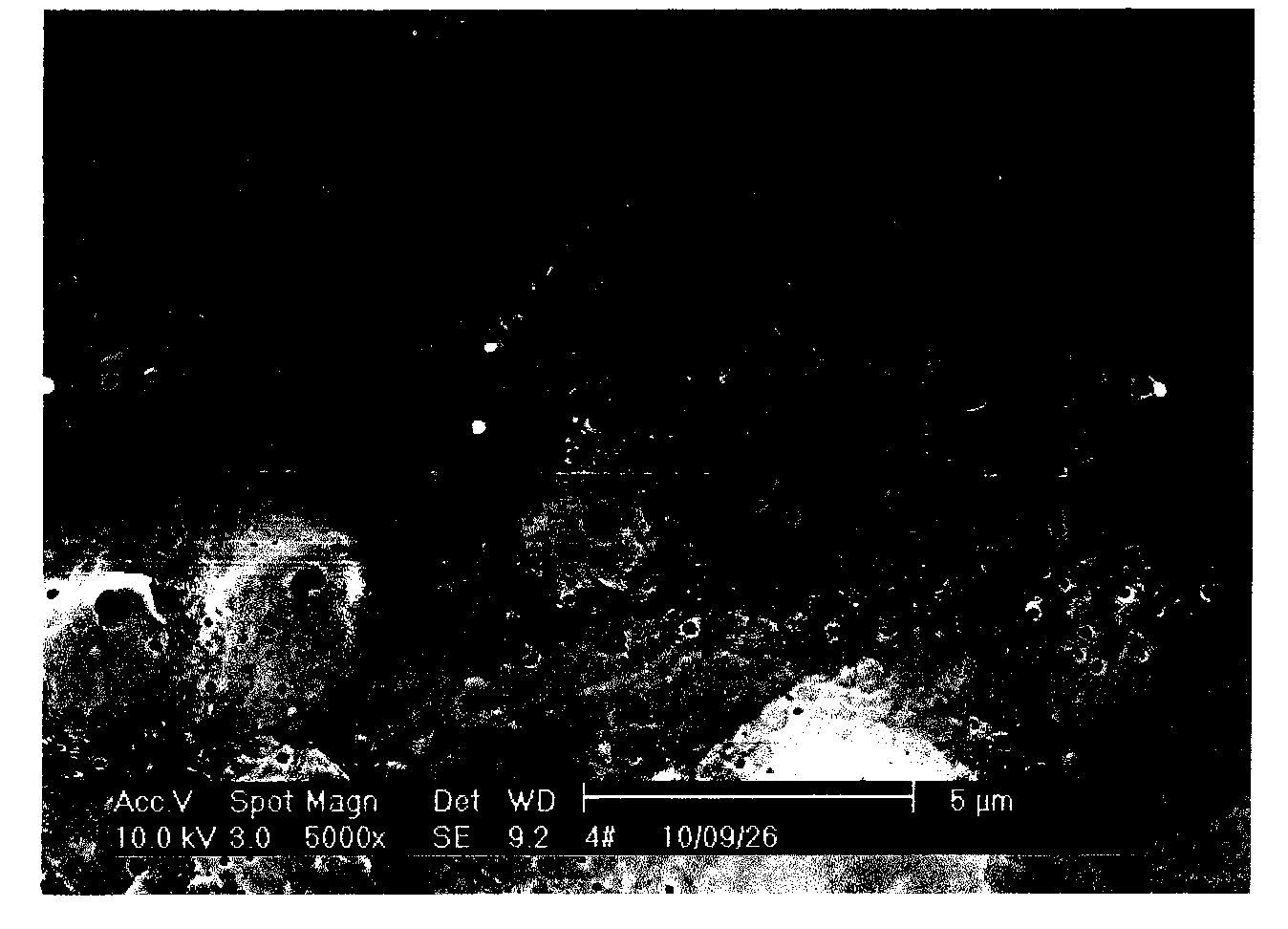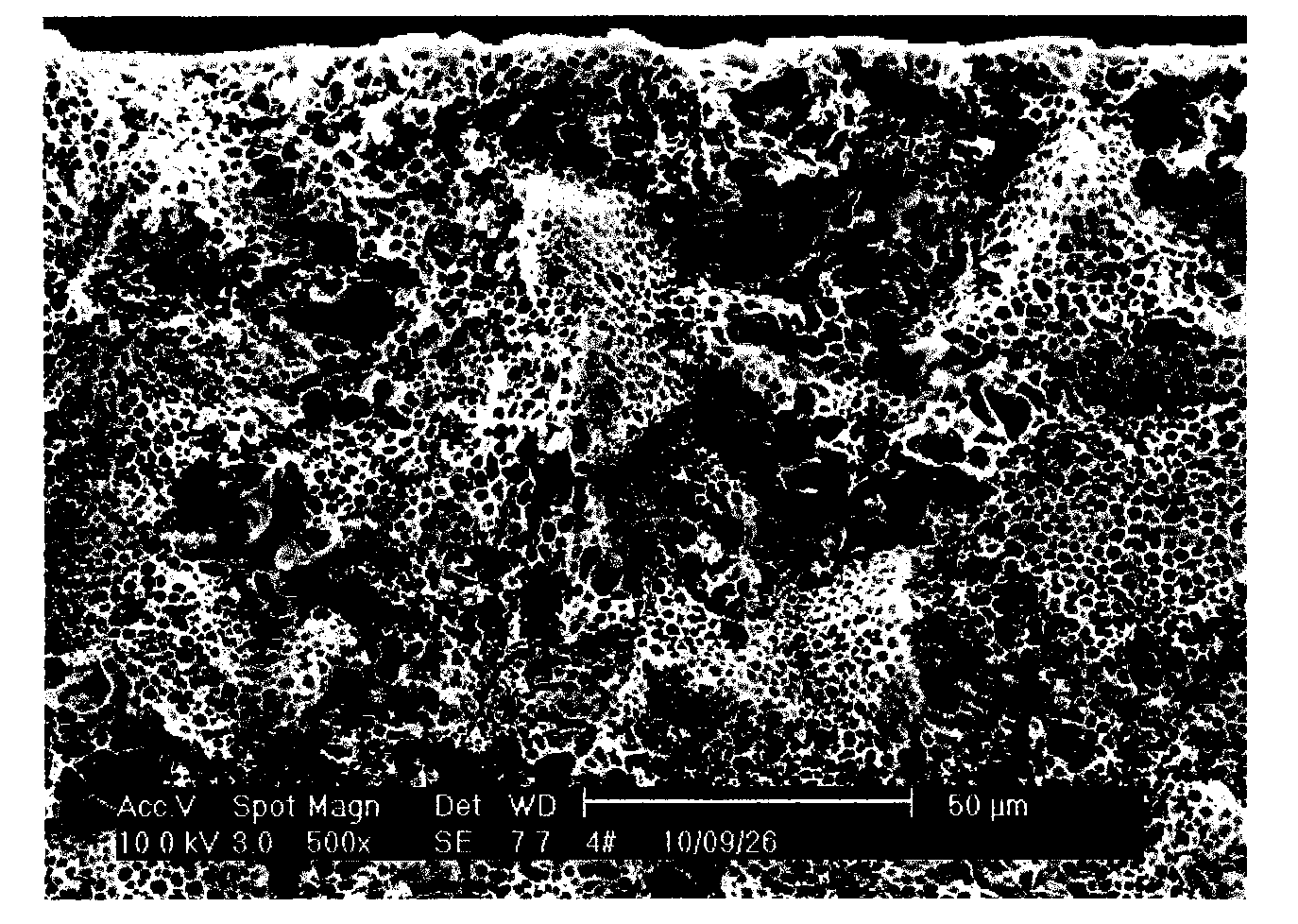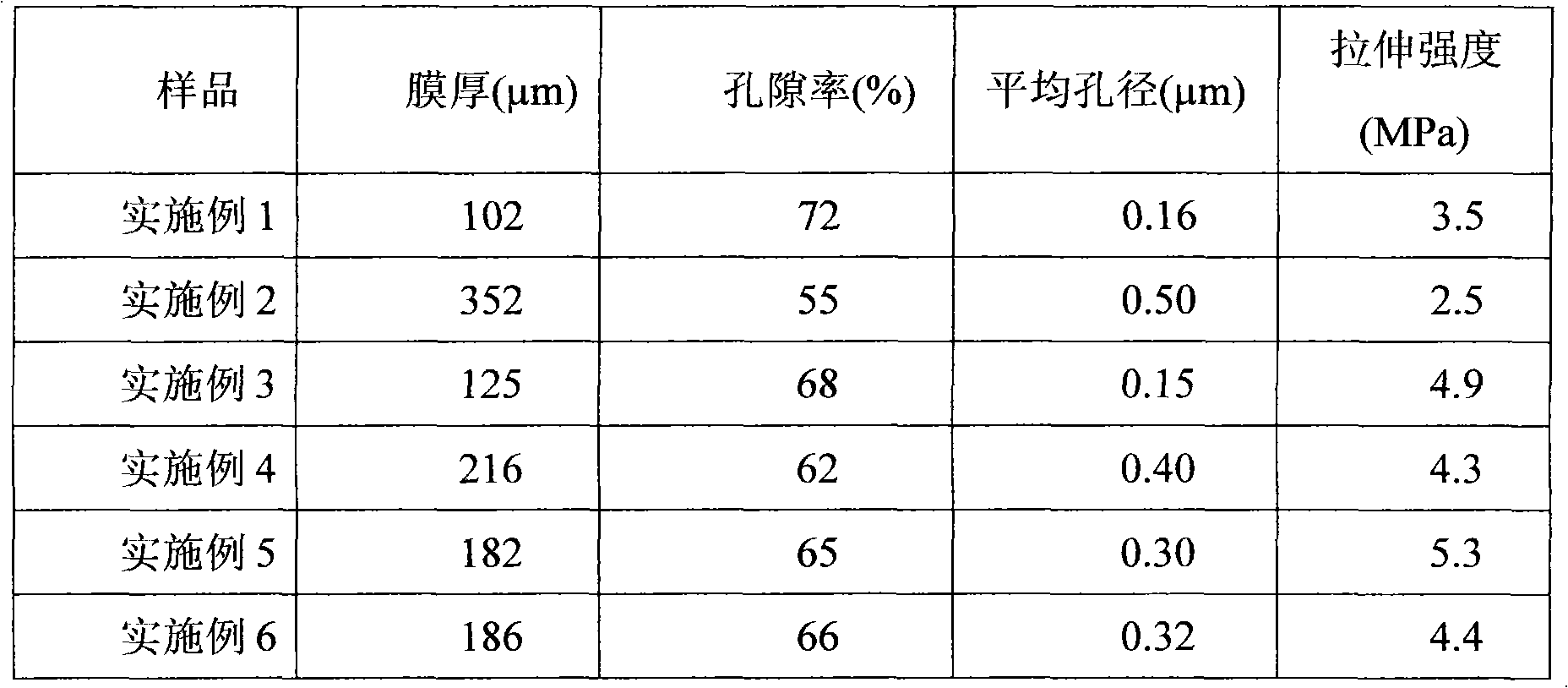Preparation method of plate polypropylene separation membrane
A polypropylene membrane, polypropylene technology, applied in semi-permeable membrane separation, chemical instruments and methods, membrane technology, etc., can solve the problems of easy skin layer, high equipment requirements, unfavorable membrane promotion and application, etc., and achieve excellent chemical resistance. performance, improving surface pore-forming properties, and the effect of good application prospects
- Summary
- Abstract
- Description
- Claims
- Application Information
AI Technical Summary
Problems solved by technology
Method used
Image
Examples
Embodiment 1
[0034] Adopt the method comprising following steps to prepare polypropylene flat separation membrane:
[0035] (1) add polypropylene resin and diluent in the container with stirring device, the mass percent of polypropylene resin is 20%, and melt index is 2g / 10min, and ethylene content is 0.3% in the resin, and soybean oil is as diluent, The mass percentage is 80%, heated to 200° C., and stirred for 3 hours under the condition of nitrogen flow, and left to defoam for 2 hours after stopping the stirring to obtain the casting solution;
[0036] (2) cooling the casting solution in liquid nitrogen, the cooling time is 30 minutes, to obtain a solidified sample;
[0037] (3) Take a certain cured sample and place it between the upper and lower layers of polyimide diaphragms, and place a 150mm×150mm metal foil in the middle on the upper diaphragm. The thickness of the metal foil is 100μm, and then put Put it into a preheated flat mold, heat it to 200°C, pressurize and keep it for 10 ...
Embodiment 2
[0041] Adopt the method comprising following steps to prepare polypropylene flat separation membrane:
[0042] (1) Add polypropylene resin and diluent in the container with stirring device, the mass percent of polypropylene resin is 40%, and melt index is 19g / 10min, and ethylene content is 15% in the resin, and peanut oil is as diluent, mass The percentage is 60%, heated to 175°C, and stirred for 0.5 hours under the condition of flowing nitrogen, and left to defoam for 0.5 hours after stopping the stirring to obtain the casting solution;
[0043](2) cooling the casting solution in an ice-water mixture for 30 minutes to obtain a solidified sample;
[0044] (3) Take a certain cured sample and place it between the upper and lower layers of polyimide diaphragms, and place a metal foil of 150mm×150mm in the middle on the upper diaphragm. The thickness of the metal foil is 400μm, and then put Put it into a preheated flat mold, heat it to 175°C, pressurize and keep it for 5 minutes,...
Embodiment 3
[0048] Adopt the method comprising following steps to prepare polypropylene flat separation membrane:
[0049] (1) Add polypropylene resin and diluent in the container with stirring device, the mass percent of polypropylene resin is 25%, and melt index is 2.7g / 10min, castor oil is as diluent, and mass percent is 75%, heating to 180°C, and stirred for 1 hour under the condition of flowing nitrogen, and then stood still for defoaming for 1 hour after stopping the stirring to obtain the casting solution;
[0050] (2) cooling the casting solution in liquid nitrogen, the cooling time is 10 minutes, to obtain a solidified sample;
[0051] (3) Take a certain cured sample and place it between the upper and lower layers of polyester film, and place a 150mm×150mm metal foil in the middle on the upper film. The thickness of the metal foil is 150μm, and then put it into the In the preheated flat mold, heat to 180°C, keep pressurized for 10 minutes, and cool the mold with a water cooling ...
PUM
| Property | Measurement | Unit |
|---|---|---|
| melt flow index | aaaaa | aaaaa |
| thickness | aaaaa | aaaaa |
| melt flow index | aaaaa | aaaaa |
Abstract
Description
Claims
Application Information
 Login to View More
Login to View More - R&D
- Intellectual Property
- Life Sciences
- Materials
- Tech Scout
- Unparalleled Data Quality
- Higher Quality Content
- 60% Fewer Hallucinations
Browse by: Latest US Patents, China's latest patents, Technical Efficacy Thesaurus, Application Domain, Technology Topic, Popular Technical Reports.
© 2025 PatSnap. All rights reserved.Legal|Privacy policy|Modern Slavery Act Transparency Statement|Sitemap|About US| Contact US: help@patsnap.com



